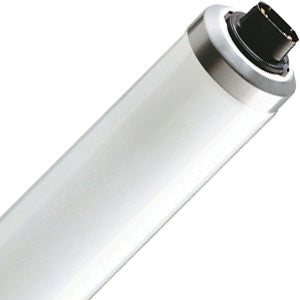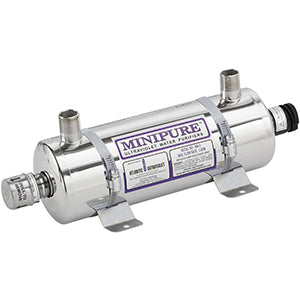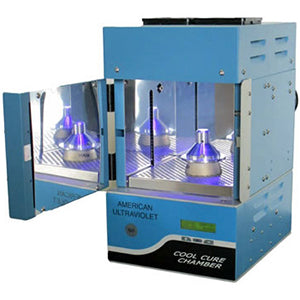Ultraviolet Light Bulbs
Ultraviolet light (UV) is invisible to the human eye. It is part of the electromagnetic spectrum that lies beyond the purple range of the visible spectrum. The ultraviolet spectrum has wavelengths between 100 and 400 nanometers (nm). The UV spectrum is further divided into wavelength ranges named UVA (blacklight), UVB (phototherapy), and UVC (germicidal).
We carry ultraviolet light bulbs using all of these wavelengths for a variety of stage/studio, special effects, phototherapy, and air/water purification equipment. If you can not find the ultraviolet bulb you need, call 800.784.1998 to speak with a lighting specialist. In most cases, we can help you locate the UV bulb you are looking for.
About UV Bulbs & Fixtures
All of the bulbs and fixtures in this category emit light in the ultraviolet part of the spectrum. However, not all UV bulbs or fixtures are interchangeable. There are a large number of applications utilizing UV light.
UVA Blacklight
The UV-A part of the ultraviolet spectrum is used in a wide variety of applications. Commonly referred to as blacklights, these UV bulbs are much more than a novelty. Although they are used in many blacklight fixtures in stage/studio applications, blacklights can be used for fraud detection of currency, validation of identification, and even identifying organic waste to track the path of bedbugs.
UV-A light bulbs are often found in insect traps and bug zappers for commercial and residential applications. Many flying insects are attracted to ultraviolet light.
UV-A light provides very little disinfection power, although it can have some germicidal effectiveness over very long periods of time. It is generally not dangerous to humans, except in high dosage amounts.
UVB Phototherapy
Specialty UV-B bulbs are used in medical settings for treatment of jaundice, skin disorders, and other conditions. It can also be used for some germicidal applications, although it does not have nearly the effective power of UV-C lights.
UVC Disinfection
UV-C light can be extremely harmful to human and animal skin and eyes, and is used for disinfection of air and surfaces, as well as water purification. Most UV-C light from the sun is filtered out before it even hits the earth.
UV-C germicidal bulbs and fixtures are most often used in medical settings to sanitize surfaces and clean rooms. Municipalities have long used UV-C for water purification. And with the increased awareness of the danger of airborne pathogens, the demand for UV-C for air purification has skyrocketed.
Common Types of UV Light Bulb Technology
Low Pressure Mercury
The most common type of UV light bulb is the low pressure mercury lamp. These resemble fluorescent tubes or compact fluorescent bulbs. For UVC, they are made of quartz with a peak transmission of 253.7nm. UVB and UVA bulbs are more similar to fluorescent tubes, using glass with various phosphors to control the wavelengths emitted. They offer the lowest cost, good energy efficiency, and long life of 9,000-17,000 hours. There are also more manufacturers making these bulbs, and more variations of the bulbs in terms of lengths, wattages, bases, and bulb shapes.
Medium Pressure Mercury
Medium pressure ultraviolet light bulbs emit broadband UVB/UVC wavelengths. These are a type of high-intensity discharge (HID) lamp. Because of the UVB component, they tend to produce more damage to enzymes of microbes and inhibit photoreactivation.
UV Pulsed Xenon
UV pulsed xenon lamps emit pulses of ultraviolet light lasting a few milliseconds. They often have very high wattages and high ultraviolet outputs. They emit a broad spectrum of light in the UV, visible, and infrared ranges. They have been found to be as effective as mercury lamps in germicidal effectiveness.
UV LEDs
LEDs that emit ultraviolet light are currently more expensive than standard LEDs, but hold promise for applications where fluorescent tube-type lamps are inconvenient or unavailable. LEDs have a greater energy efficiency than other UV light sources and can be developed to emit radiation at various wavelengths. Blacklight LEDs are available in various sizes and bases, and some air and water disinfection fixtures that use UVC LEDs have been developed. UV LEDs have also been used to treat a range of skin disorders and wound healing.
Excimer Lamps
A relatively new technology, excimer lamps emit a single wavelength. Lamps emitting wavelengths of 308nm (UVB), 222nm (UVC), and 207nm (UVC) have been developed. These ultraviolet light sources are not widely available yet, have the highest cost per bulb, and have an efficiency lower than low pressure mercury lamps.









